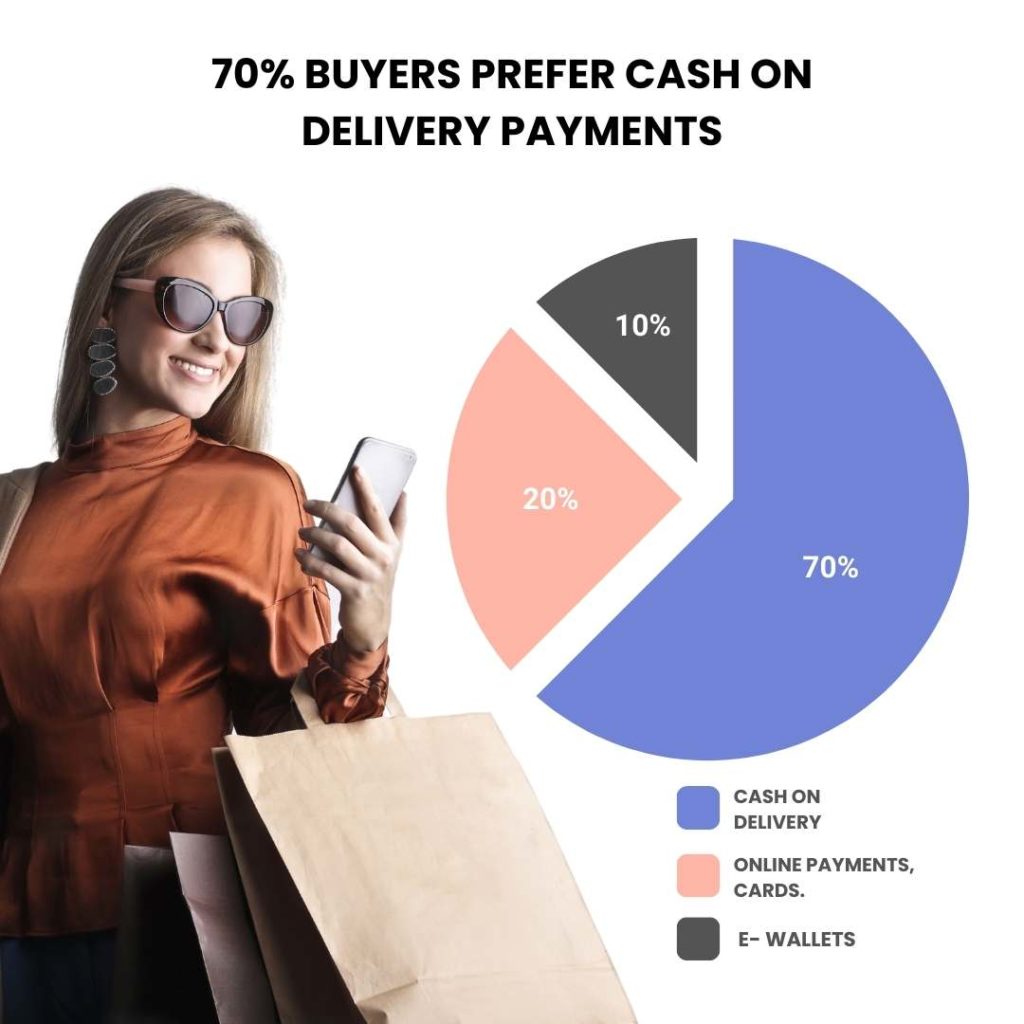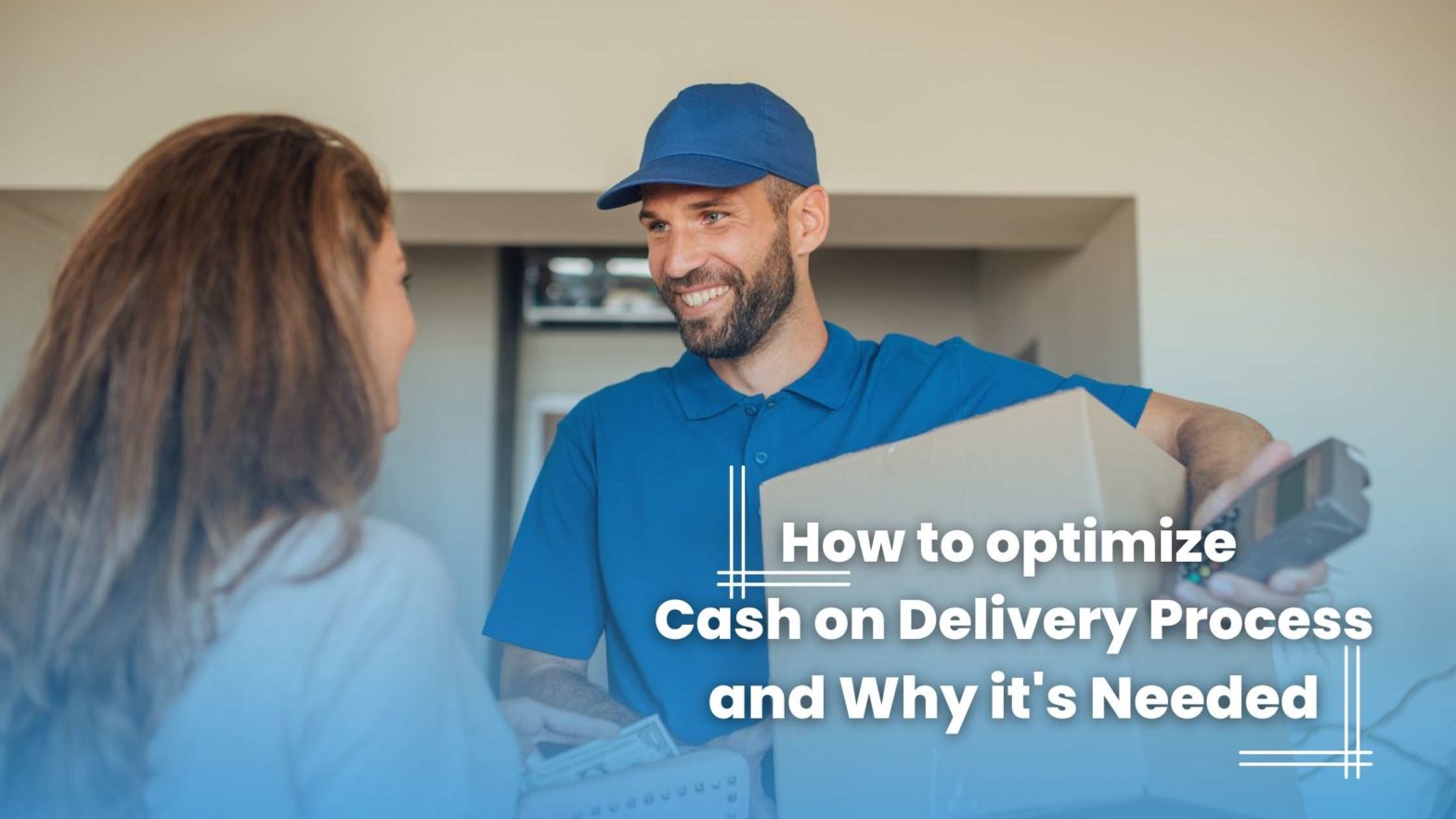
How to optimize Cash on Delivery Process and Why it's Needed
Cash on delivery, or COD, is a word that most of us in the eCommerce industry and online buying are familiar with. In simple terms, it is a method of payment in which the customer pays the courier or vendor immediately with cash or credit card when the product is delivered. This is considered to be one of the most popular methods of online buying and selling transactions.
Without a doubt, technology has brought about a sea change in every industry throughout the years. Due to several constraints imposed by protracted lockdowns, the pandemic has hastened technological adoption and disrupted various sectors, with the logistics industry being at the forefront of change. The ecommerce logistics industry was likewise one of the few to recover quickly after the lockdowns.
However, the pandemic has changed the way the industry functions, with innovations such as contactless deliveries becoming a must, and as a result, more people shifted to ordering on prepaid ecommerce portals during the lockdown period.
While the eCommerce business has embraced these on a massive scale, India has traditionally been a cash-based country, and as vaccinations are being delivered to the populace while safety measures are implemented, the Cash on Delivery (COD) mode of payment is resurfacing. When it comes to payments, India is mostly a cash-based economy, despite the fact that a large percentage of the population has adopted digital payments. This means that the Cash on Delivery (COD) mode of payment will continue to be a major priority for eCommerce websites and marketplaces.

Despite the popularity of digital payments like UPI, card payments, and mobile wallets, research shows that COD still accounts for one of the greatest percentages of overall payment methods in developing countries. While the Cash on Delivery process appears to be simple for customers and a painless one for businesses, it is not without its drawbacks.
Because COD payments have intrinsic concerns such as a higher possibility of order rejections at the time of delivery, which leads to higher sales returns, a comprehensive, robust solution for a frictionless Cash on Delivery process must be established. This has a direct impact on revenue realizations, inventory planning, and other aspects of the business, all of which have an impact on the company’s bottom line.
Table of Contents
Why do Indians Prefer Cash on Delivery?
Even if our society is becoming more technologically advanced, credit/debit cards, net banking, and e-wallets account for only 30% of internet purchases. The following are some of the reasons why cash is still king:
- Every day, new e-commerce sites emerge. Customers are afraid of being scammed because they don't know the integrity of such internet stores.
- Customers have been making cash payments since the beginning of time, and they are familiar with them.
- Transactions are made easier with cash payments. It's as simple as handing over the money for the product or service obtained and walking away.
- There is still some post-purchase order anxiety. Refund duration, refund not received, refund not permitted by some businesses, and so on.
- Customers in tier 2 and 3 cities are especially skeptical of internet transactions. They are no longer reliant on credit cards or internet payments because they can pay with cash.
Some clients prefer cash on delivery because they want to be certain that the goods that they receive are what they expected. They prefer to inspect the product in front of the delivery person before deciding whether or not to accept it. They can seek a refund if they receive an incorrect or broken product if they opt for payments using cash on delivery.
Here are five practical strategies to improve the eCommerce logistics industry's COD order delivery procedure.
Examining the customer's history
Every firm has both good and bad customers. Some people may be prompt in completing their monetary transactions for orders, while others may drag the process out. For logistics companies to enhance the COD process, they should use consumer behavior analytics based on previous orders and rejections. This can then be utilized to create internal flags, allowing the COD process to become more efficient by screening out clients who are serious about their purchases at the time of order taking.
Verification of customer contact information and address
In eCommerce, numerous social media outlets account for a significant portion of consumer acquisition. These consumers are typically from Tier 3 and Tier 4 cities, and they want to pay by cash on delivery because they are making their first online purchase. Helping customers write appropriate addresses with house/ward numbers and local landmarks while placing orders is critical. Address validation software is used by most large eCommerce retailers and websites to identify problematic addresses and execute an address re-verification process before shipping those items.
Rechecking a customer’s address and phone number might go a long way toward making the Cash on Delivery process unfold smoothly. Re-validating a customer’s contact number via OTP, doing an address check based on the content of an address, and validating the pin code based on the content of an address are all important procedures in this process. The use of Google Maps APIs to indicate redundant/bad addresses will ensure that last-mile delivery goes smoothly.
Updating customers in case of a delay
Nobody wants their orders to be delayed, especially customers. However, in situations like the current pandemic, unforeseen delays are unavoidable. Logistics providers can integrate deeply with carriers’ Transportation Management Systems and Delivery Mobile Applications to keep customers informed of any transit delays caused by COVID-19 limits, natural disasters, carrier-initiated delays, and so on.
Businesses should share a shipment’s Non-Delivery Reason (NDR) in advance to ensure that the delivery executive’s comments about the non-delivery of COD shipments are accurate. Furthermore, sending NDRs to customers via SMS or WhatsApp and receiving comments from them via these platforms will allow customers to alert the company to any gaps in real time, allowing corrective action to be taken.
TAT adherence for shipping timelines
It’s critical to stick to the TAT (Turn Around Time) that was promised to the customer. Logistics platforms can undertake an internal analysis based on a carrier’s recent performance in those cities, lanes, or pin codes to allocate a carrier with the highest chance of delivery conversions and TAT adherence. These will enable them to detect carrier capacity, infrastructure, and on-time delivery difficulties, as well as assign the best possible carrier for COD goods.
Enabling electronic/card payments for COD orders
Customers/consignees should be able to pay for COD orders using UPI, Wallets, or by swiping their debit/credit cards on an EDC machine at their doorsteps. Allowing such electronic payment options will, in turn, reduce customer rejections and improve the Cash on Delivery process.
Conclusion:
With COD remaining the most popular mode of payment for ecommerce, brands, ecommerce websites, marketplaces must be highly adaptable in terms of technology and internal and external control mechanisms to ensure increased COD order deliverability. The measures outlined above will go a long way toward accomplishing this goal.
Like this article?
More To Explore

What Factors Should Organizations Consider Before Outsourcing Their Internal Audit Functions?
+91 1141182211 Outsourcing has become a strategic choice for many organizations looking to streamline operations, reduce costs, and enhance efficiency.

Outsourcing Internal Audit: Evaluating the Upsides and Downsides for Your Organization
+91 1141182211 In today’s dynamic business environment, companies face increasing pressure to enhance efficiency, manage risks effectively, and ensure compliance

A Background Verification Guide: Frequently Asked Questions and Their Answers
+91 1141182211 Background verification (BGV) is a crucial process used by employers to ensure they are hiring candidates with accurate

